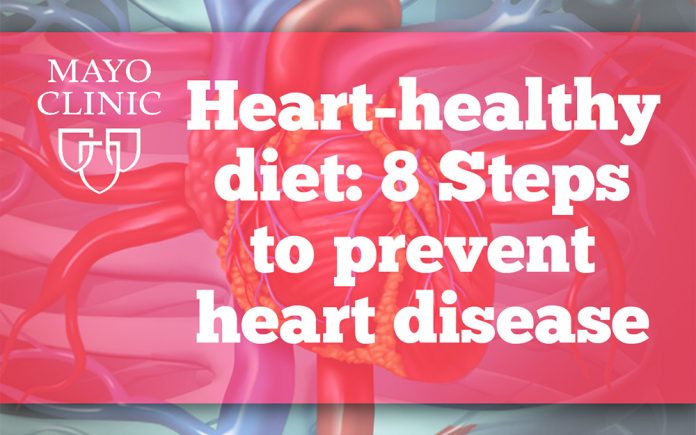
By Fire Chief Sam DiGiovanna
As Firefighters we know the pump intake valve allows the flow of water from the hydrant into the pump panel on our fire trucks. We need to have clean water with no debris otherwise it will clog the pump and we will be unable to pump water effectively or at all if too clogged.
We can look at our mouths as an intake valve as well. What you put in, if not clean, can ultimately clog our valves and keep our heart from effectively pumping or worse – at all!
I recently read a great article from the Mayo Clinic on how to maintain a Heart-healthy diet: 8 steps to prevent heart disease. The eight steps identified in the article were:
- Control your portion size
How much you eat is just as important as what you eat. Overloading your plate, taking seconds, and eating until you feel stuffed can lead to eating more calories than you should.
- Eat more vegetables and fruits
Vegetables and fruits are good sources of vitamins and minerals. Vegetables and fruits are also low in calories and rich in dietary fiber.
- Select whole grains
Whole grains are good sources of fiber and other nutrients that play a role in regulating blood pressure and heart health.
- Limit unhealthy fats
Limiting how much saturated and trans fats you eat is an important step to reduce your blood cholesterol and lower your risk of coronary artery disease.
- Choose low-fat protein sources
Lean meat, poultry and fish, low-fat dairy products, and eggs are some of your best sources of protein.
- Reduce the sodium in your food
Eating a lot of sodium can contribute to high blood pressure, a risk factor for cardiovascular disease.
- Plan ahead: Create daily menus
You know what foods to feature in your heart-healthy diet and which ones to limit.
- Allow yourself an occasional treat
Allow yourself an indulgence every now and then.
Although we now know that eating certain foods can increase our heart disease risk, it is often tough to change our eating habits. Whether you have years of unhealthy eating under your belt or want to fine-tune your diet, it’s not too late. Once you know which foods to eat more of and which foods to limit, you will be on your way toward a heart-healthy diet.
To read the entire Mayo article open here: https://lnkd.in/gzTB7NF
February is Heart Awareness month so it is important we take these recommendations seriously. Make eating right a policy that we cannot live without!
*Note: The information in this article was compiled from various sources. These suggestions are not a complete list of every preventative or loss control measure. The information is not intended to replace additional safety manuals or the advice of another qualified professional(s). We make no guarantee of results from use of this information. We assume no liability in connection with the information nor the suggestions made.











































